Freepost
How political should artists be today?
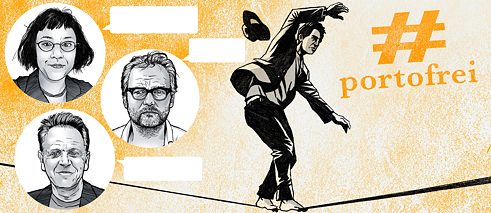
Contemporary art in Europe is socially relevant. But how does it shield itself from political appropriation? Joseph Young, sound artist, belit sağ, video artist, and Via Lewandowsky, visual artist, discuss this question – and you can join the debate! Leave us your views and questions: in the comments field on this page or on Facebook and Twitter using #freepost.
A cooperation with Internationale Gesellschaft der Bildenden Künste.
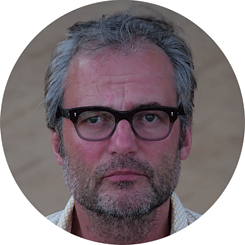 Via Lewandowsky
| Photo: Rainer Gollmer
Via Lewandowsky
| Photo: Rainer Gollmer
On the one hand, one could perhaps say that rituals and critical distance or proximity tend to be more rarely encountered when dealing with the issues I have been tackling; this is because of the spontaneity, diversity and unpredictable effects of artistic practice with its different work processes and difficult to control consequences. Every issue is embraced with open arms and ground up without prejudices or preconceptions in the creative mill, broken down into its constituent parts and, according to whichever strategy is necessary, turned into a personal object or reformulated as a personal topic.
On the other hand, methods certainly exist by which to engage with and address issues and content that recur time and again and ultimately also define my artistic practice and lead me to specific results.
See the whole contribution of Via Lewandowsky – this week as video:
The situation is definitely saddening. And I really appreciate the questioning of where this solidarity finds its expression. For me the answer is a constant search, a never ending lifelong search for forms and potentials, in order to form and re-form and re-formulate this expression.
It is dynamic and ever-being defined. Solidarity has a dynamic meaning and should have a dynamic practice as well. Many activist friends who were hardcore opposing the State and opposing to collaborate with any forms it takes, went to Mediterranean in the last years and started doing humanitarian work, filling in the gaps where governments left blank. The urgency of different situations, challenged the notion of activism in our minds, and made all of us re-define it. The same goes for solidarity.
International solidarity is something we make, it doesn't come by itself.
Years ago I was involved in a campaign group that helped connecting textile workers and organizers from several Asian countries on the issues of labor rights in the sweatshops that are mass production points for many European countries. The value of that campaign group was connecting struggles in different countries, making it very clear how the processes were taking place in different countries almost in the same order but in different times.The knowledge and experience shared and connected strengthens the struggle, the same goes for art, a lot to learn from each other. International solidarity is something we make, it doesn't come by itself.
 Via Lewandowsky
| Photo: Rainer Gollmer
Isn’t a team of two artists already the smallest entity of artistic solidarity? Haven’t artists collectives, like-minded individuals and interest groups always practised different forms of artistic solidarity? Above and beyond this, however, it is fairly amazing that there is such high acceptance among artists of behaviour that shows no solidarity whatsoever.
Via Lewandowsky
| Photo: Rainer Gollmer
Isn’t a team of two artists already the smallest entity of artistic solidarity? Haven’t artists collectives, like-minded individuals and interest groups always practised different forms of artistic solidarity? Above and beyond this, however, it is fairly amazing that there is such high acceptance among artists of behaviour that shows no solidarity whatsoever.In no other sector of society does any group of professionals display such grave social differences. Since no catalogue of services exists to specify the value of the work that has been done, each artist is responsible for their own artistic added value. Although it would be very interesting to do so, it is almost impossible to give any thought here to ethical questions.
Solidarity does work perfectly well in the art context itself.
Whether it is a question of health insurance, studio agencies, commissions from state property developers, remuneration from copyright or exhibitions – in many European countries these are the political instruments of solidarity that have nothing to do with liberal market forces. These structures need to be strengthened and protected.
 Joseph Young
| Photo: Joseph Young
The notion of “Fortress Europe” makes it hard to visualise the European Union as “a hero”, as belit stated in her previous response. Heroes, I would say, are over-rated and what we really need now is not idealisation but practical, political reform of the kind that DiEM25 is calling for in the 2019 EU elections.
Joseph Young
| Photo: Joseph Young
The notion of “Fortress Europe” makes it hard to visualise the European Union as “a hero”, as belit stated in her previous response. Heroes, I would say, are over-rated and what we really need now is not idealisation but practical, political reform of the kind that DiEM25 is calling for in the 2019 EU elections.DiEM25 has many artists on its coordinating committees, demonstrating the desire of some to get directly involved in the political process. I am not advocating for DiEM25, by the way, just pointing to it as a possible mechanism for change.
Our focus as artists needs to be on protecting and extending the idea of Europe.
There are many initiatives across Europe advocating for open borders, including the tiny, Go Europe! with its Make Europe Greater! Tour creating face to face encounters between citizens across the continent. The IAA and Culture Action Europe could take a lead here in establishing links between artists and the rest of the activist community, offering information resources for artists wanting to get involved in the various campaigns.
“Europe is not a place, it is an idea, and that idea is our only strength.” Máriam Martinez-Bascuñán writes in El Paìs on the 28th of October 2018.
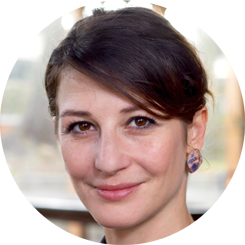 Photo: Roger von Heereman / Konnektiv
I am saddened to find myself agreeing to the sentiment of the closing sentence in belit sağ’s response – because the very ideals we are speaking of are a farce as human rights are only such if they apply to all, and not to some who carry the right passport.
Photo: Roger von Heereman / Konnektiv
I am saddened to find myself agreeing to the sentiment of the closing sentence in belit sağ’s response – because the very ideals we are speaking of are a farce as human rights are only such if they apply to all, and not to some who carry the right passport.The question that remains: Is there a Europe beyond that? Is there a concept of Europe that is not undermined and devaluated by the current politics? And if so, where does it find its expression?
What kind of international solidarity in terms of freedom does art need?
Many civil action groups have formed and taken state matters like saving people from the Mediterranean Sea into their own hands in the past years. In my research, I came across events such aus Glasgow Buzzcut and FromMe2You – both events created by artists for other artists to share knowledge and create networks of support.
Is the same taking place in form of artistic solidarity? And how can we foster such an exchange beyond language barriers and forms of expression in order to, as Joseph Young put it, offer a hopeful vision for the future?
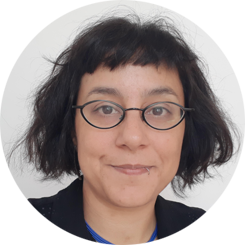 belit sağ
| Photo: belit sağ
I do believe that artistic interventions have a role to create spaces to come together, moments to contemplate and feel safe. There are too many threats for many people especially in these times we are in.
belit sağ
| Photo: belit sağ
I do believe that artistic interventions have a role to create spaces to come together, moments to contemplate and feel safe. There are too many threats for many people especially in these times we are in.We should ask the question of what art can do that is hard to have, what spaces and what experiences art can create that are needed at this moment. Art is good at finding loopholes and gaps, not being restricted by rules and regulations. And political art can take the form of a small gesture.
I want to see art making as a contribution to a larger movement.
The fact that its unity is threatened with even a worse situation shouldn’t make us blind to what the European Union actually stands for, what and who it includes and excludes, who is defended and who is not worthy of being defended, and especially what is happening on its borders at this very moment. One of the biggest mass killings is taking place in the name of protecting the borders of the European Union, and these are not policies exclusively supported by far right. For certain parts of the world, the European Union has never been a symbol or defender of human rights and peace.
That said, the struggle against the far right is real. The hatred is targeting daily lives of people of color, poor people, ethnical and religious minorities, the LGBT community and women all over the world. A demo that asks for human rights inside and on the borders of European Union is an extremely urgent response to these times. The danger at this moment is finding a hero in the idea of EU, while being blinded to the violences EU has been imposing.
 Via Lewandowsky
| Photo: Rainer Gollmer
There is no doubt that an artist can and should share some of the responsibility for matters of concern to society, yet how much commitment can any artist afford without jeopardizing their freedom and credibility? Last century, the exploitation of art for political purposes at times made artists and artworks appear in a bad light.
Via Lewandowsky
| Photo: Rainer Gollmer
There is no doubt that an artist can and should share some of the responsibility for matters of concern to society, yet how much commitment can any artist afford without jeopardizing their freedom and credibility? Last century, the exploitation of art for political purposes at times made artists and artworks appear in a bad light.And yet the dictates of the state are still the most powerful political statements of a society’s culture. This contradiction can be illustrated by Gerhard Richter’s four Birkenau paintings that today are displayed in the Reichstag opposite his monochrome compositions in the colours of the German flag. For his Birkenau series, Richter created artistic reproductions of photographs that an inmate had secretly taken of a Sonderkommando – a work unit of prisoners – in Auschwitz. Richter then painted over them in the abstract style that typifies his work.
Visual arts will continue to accompany and observe the polarization of society as a protected space and laboratory.
Nonetheless, visual arts will continue to accompany and observe the polarization of society as a protected space and laboratory, as an instrument and model, if left in peace.
 Joseph Young
| Photo: Joseph Young
Artists have always contributed to society in many and varied ways, not least as active citizens in their local communities. The question for me is not whether artists should involve themselves in politics, but how?
Joseph Young
| Photo: Joseph Young
Artists have always contributed to society in many and varied ways, not least as active citizens in their local communities. The question for me is not whether artists should involve themselves in politics, but how?In a recent review of my show at the Estorick Collection, London Make Futurism Great Again the reviewer remarked that my response to the “absurdities of capitalism” was “disappointing as most run of the mill protest takes the form of an art project these days.”
We now need to take a step further and to offer a hopeful vision for the future.
For this we will need two things – compassion and ideology. Compassion to counterbalance the hatred of populist rhetoric and ideology to provide answers to the urgent questions of the day. It is not enough when confronted with the spectre of fascism returning to the shores of Europe for artists simply to question the status quo …
I really like the work of UK artists group Keep it Complex in this respect – with their rallying cry that mocks the tendency to over-simplify complex issues, a typical tactic of the alt-right. It is an artist’s duty, I believe, to “complexify” the issues of the day, and to assist their audience in exploring the root causes of the very urgent issues that we face.
 Photo: Roger von Heereman / Konnektiv
Our democracies and the concept of the European Union are being tested and tried. But the rise of populism, nationalistic and authoritarian traditionalism is creating a new solidarity amongst those who believe in the concept of the European Union, its role as a defender of human rights and peace.
Photo: Roger von Heereman / Konnektiv
Our democracies and the concept of the European Union are being tested and tried. But the rise of populism, nationalistic and authoritarian traditionalism is creating a new solidarity amongst those who believe in the concept of the European Union, its role as a defender of human rights and peace.This new-found solidarity could be seen at the #unteilbar demonstration in Berlin last weekend, where nearly 250.000 people took to the streets to protest for solidarity, the right to asylum, democracy and human rights.
It seems that the expectation that art should be part of a political debate is rising.
“If art doesn’t do politics, who will?”, Documenta14 curator Dieter Roelstraete asked his students in the summer of 2017. In today’s European society, how political can and should art be? How can art help break out of the polarization we are currently experiencing in our societies?
Discussants
 belit sağ
| Photo: belit sağ
belit sağ is a videomaker and visual artist living in Amsterdam. She studied mathematics in Ankara and audiovisual arts in Amsterdam. Her artistic background is rooted in videoactivist groups in Turkey. She co-initiated bak.ma, a growing online audiovisual archive of social movements in Turkey. She has presented her work, among other places, at Documenta14 and international film festivals.
belit sağ
| Photo: belit sağ
belit sağ is a videomaker and visual artist living in Amsterdam. She studied mathematics in Ankara and audiovisual arts in Amsterdam. Her artistic background is rooted in videoactivist groups in Turkey. She co-initiated bak.ma, a growing online audiovisual archive of social movements in Turkey. She has presented her work, among other places, at Documenta14 and international film festivals. 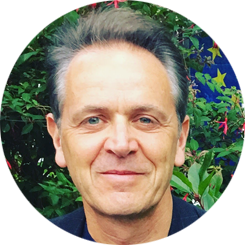 Photo: Joseph Young
Joseph Young is a sound artist from Great Britain. He continues to campaign to keep Britain in the EU as the founder of twitter campaign @artsforeu. His work has been exhibited at Tate Modern and Seoul Museum of Art among other places. Young makes sound installations and performance works for galleries and site-specific spaces.
Photo: Joseph Young
Joseph Young is a sound artist from Great Britain. He continues to campaign to keep Britain in the EU as the founder of twitter campaign @artsforeu. His work has been exhibited at Tate Modern and Seoul Museum of Art among other places. Young makes sound installations and performance works for galleries and site-specific spaces. Photo: Rainer Gollmer
Via Lewandowksy, born in Dresden, is a visual artist who works with diverse artistic media. He is best known for his sculptural installations and his exhibition scenographies with architectonic influences. His works in the public sphere and his performances not only have an obvious political aspect but also intentionally overlie different levels of comprehension.
Photo: Rainer Gollmer
Via Lewandowksy, born in Dresden, is a visual artist who works with diverse artistic media. He is best known for his sculptural installations and his exhibition scenographies with architectonic influences. His works in the public sphere and his performances not only have an obvious political aspect but also intentionally overlie different levels of comprehension.
Moderator
 Photo: Roger von Heereman / Konnektiv
Geraldine de Bastion is a political scientist who advices public institutions, NGOs and business enterprises on the use of digital technologies. Her expertise is valued by internet activists and bloggers around the world. She is a member of Digitale Gesellschaft e.V., which fights for basic rights and consumer protection in the digital domain. Each year she is a sought-after curator and presenter at the international internet conference re:publica.
Photo: Roger von Heereman / Konnektiv
Geraldine de Bastion is a political scientist who advices public institutions, NGOs and business enterprises on the use of digital technologies. Her expertise is valued by internet activists and bloggers around the world. She is a member of Digitale Gesellschaft e.V., which fights for basic rights and consumer protection in the digital domain. Each year she is a sought-after curator and presenter at the international internet conference re:publica.